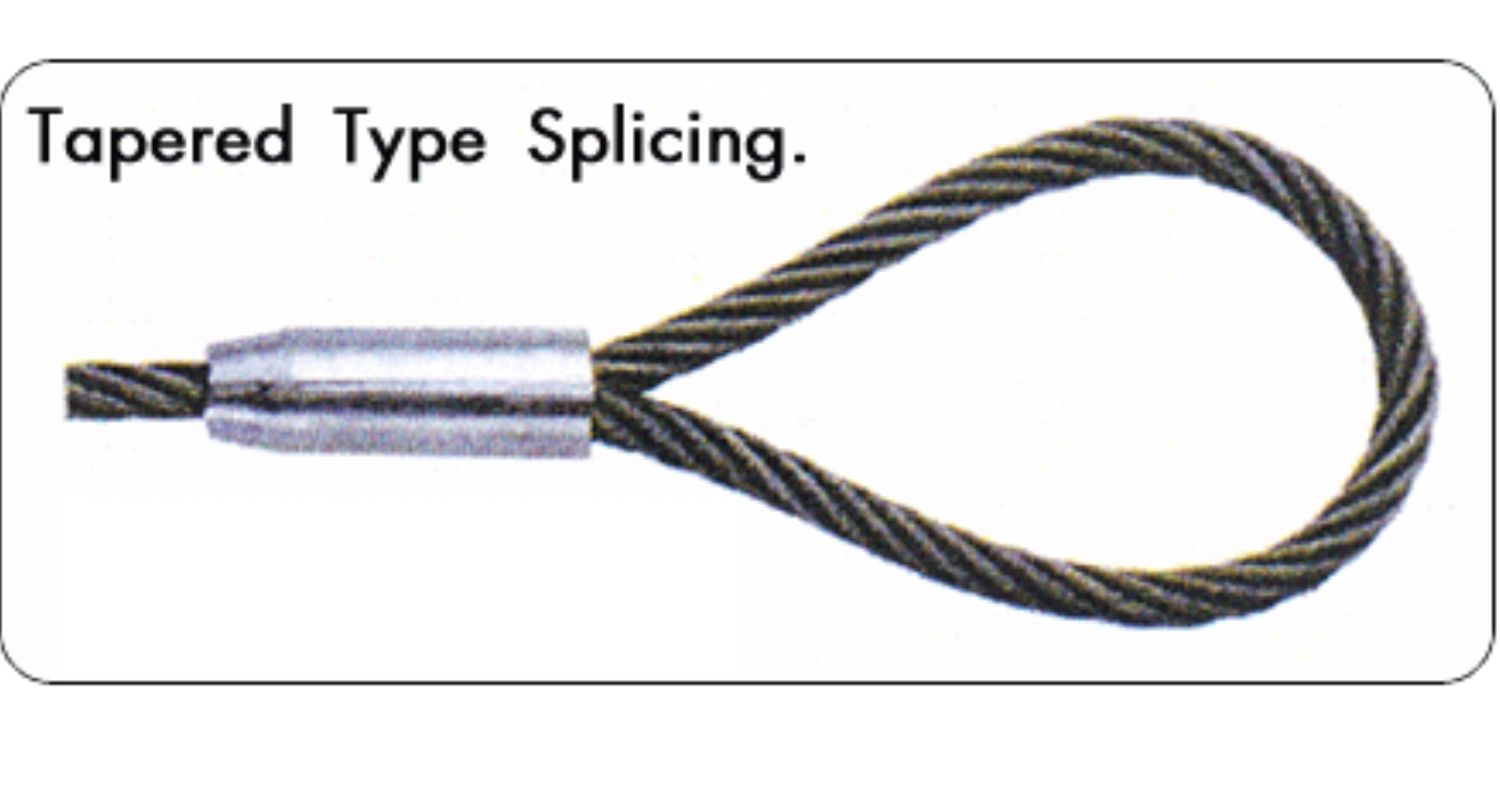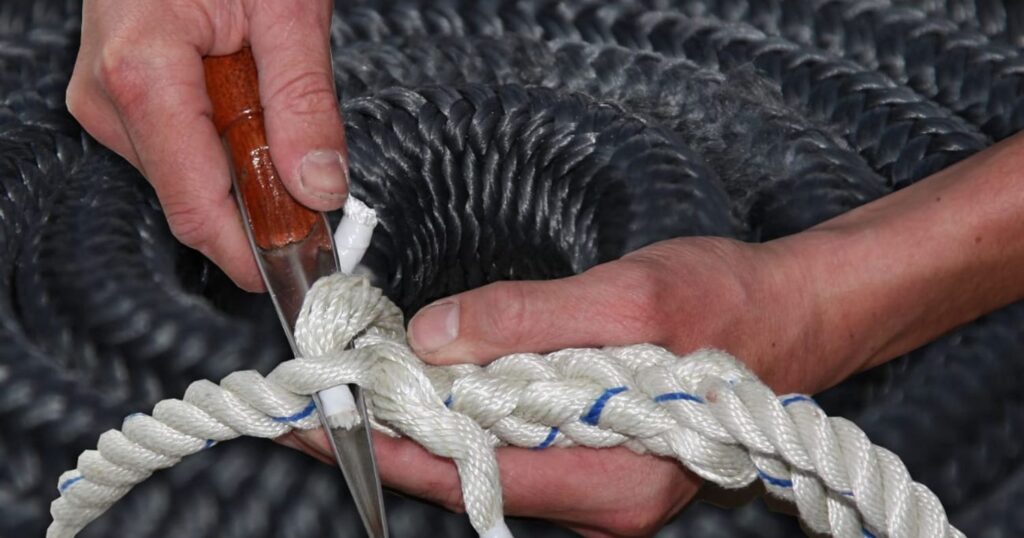Tổng quan
When it comes to leashes, strength and durability are crucial. No one wants a leash that breaks easily, especially when walking a pet. One way to ensure that a leash lasts a long time and can withstand pressure is through hand-splicing.
This technique helps create strong, durable leashes that will serve you and your pet well. In this article, we will break down the process of hand-splicing and why it is a preferred method for making high-quality leashes.
Key Techniques in Hand-Splicing
Hand-splicing is an art. It involves weaving the rope fibers in a precise way to make a strong splice. There are several techniques that make the process successful, and we’ll cover three main ones: eye splice formation, the tucking process, and setting and locking the tuck.
1. Eye Splice Formation
The eye splice formation is one of the most critical steps in hand-splicing. This is where a loop is created at the end of the rope. The eye splice allows you to attach the leash to various fittings, such as clips or rings.
Ropes like natural cotton ropes usually need only three cycles of tucks, as the fibers are softer. However, synthetic ropes are slipperier and need at least five cycles of tucks. This makes the splice secure and ensures that the loop will not come undone. The eye splice is vital because it holds everything together. Without it, the leash would not stay intact under stress.
2. The Tucking Process
Once the eye splice is formed, the next step is the tucking process. This involves carefully inserting the rope ends into the rope’s body. This ensures the rope stays tight and does not unravel over time.
The process requires patience and precision. When making a tuck, you need to insert one strand under adjacent strands. This secures the splice. A full tuck involves rotating the dead-end strand around the rope body. This step locks the rope fibers in place, ensuring a strong, durable leash. If done correctly, the leash will hold together even under heavy pressure.
3. Setting and Locking the Tuck
After the tucks are made, you need to set and lock them. This is where tools like marlin spikes come into play. These tools help tighten the rope, ensuring that the tucks stay secure. The locking process is essential because it keeps the splice intact.
The strength of the locked tuck ensures that your leash will not unravel or lose strength. With a locked splice, the leash will be as strong as possible. Even dogs that pull hard won’t be able to break it.
Step-by-Step Process for Splicing a Leash

Now that we understand the key techniques involved, let’s walk through the step-by-step process of creating a hand-spliced leash. From preparation to finalizing the leash, each step contributes to its overall strength and aesthetic appeal.
1. Preparation
The first step in hand-splicing is preparing the rope. Measure the length of the rope you need and cut it to size. For most leashes, you will need about 14 inches of rope for the handle. Mark the starting point for the splice. This ensures you have enough length for the tucks and that the rope fibers will be even.
2. Initial Tucks
After preparing the rope, begin the tucking process. Start by making the first tuck, where you insert the end of the rope into the body. Repeat this process in a tuck-and-turn-back pattern. Each tuck reinforces the splice strength. You will need to repeat this several times, depending on the type of rope you are using. The more tucks, the stronger the leash.
3. Securing Ends
Once you finish the tucking process, it’s time to secure the ends. Use transparency tape to temporarily hold the braid in place. This prevents the rope from loosening as you continue working. Trim any excess rope ends for a clean finish. This step is crucial to avoid loose fibers that could cause the leash to unravel.
4. Finishing Wrap
To add a luxury touch and protect the splice area, wrap the end with decorative twine. This wrap not only enhances the aesthetic appeal of the leash but also provides extra security to the splice. The decorative wraps protect the rope fibers from wear and tear over time.
5. Finalizing
The final step is to tie off any loose ends. Hide any knots under the decorative wraps to maintain a clean, polished look. The last touches will give your leash a professional, sleek appearance.
Advantages of Hand-Splicing in Leash Making
Hand-splicing offers many advantages over other leash-making methods. It is the preferred method for those who want strength, durability, and a high-end product. Let’s explore the top benefits of hand-spliced leashes.
1. Strength Retention
Hand-spliced leashes retain almost 100% of the rope’s original strength. Unlike knotted leashes, which can lose up to 50% of their strength due to weak points at the knots, hand-spliced leashes are much stronger. This makes them a better choice for pet owners who need a reliable leash that won’t break under pressure.
2. Durability
Leashes that are hand-spliced are more durable and can handle tough conditions. Whether you’re walking your dog through the park or hiking in the mountains, a hand-spliced leash will not fall apart. The tucking process locks the fibers in place, making them highly resistant to unraveling. Even if your dog pulls hard, the leash will stay intact.
3. Aesthetic Appeal
Hand-spliced leashes are not just strong; they are also beautiful. The decorative wraps and the smooth, polished look make them stand out. Luxury dog leashes made with hand-splicing are stylish and show off craftsmanship. They look great and feel comfortable to hold, with some even featuring ergonomic handles and brass fittings for added elegance.
Hand-Spliced vs Knotted Leashes: Which is Better?

When deciding between hand-spliced leashes and knotted leashes, it’s important to weigh the benefits of each. While knotted leashes are cheaper and easier to make, they can’t compete with the durability and aesthetic appeal of hand-spliced leashes.
Knotted leashes have a higher chance of losing strength over time. The knots create stress points that can weaken the rope. In contrast, hand-spliced leashes maintain their splice strength retention and can handle more stress without breaking.
For those looking for a luxury leash that’s both strong and stylish, hand-splicing is the way to go.
Why Hand-Spliced Leashes Are Superior
Hand-spliced leashes offer several advantages over other leash types. Let’s break down why these leashes are a superior choice for pet owners.
1. Strength Retention
As mentioned before, hand-splicing ensures that the rope maintains its full strength. Knots, however, create weak spots where the rope fibers are compressed. This can lead to breakage over time. A hand-spliced leash avoids this issue, making it far more reliable.
2. Durability
Hand-spliced leashes are built to last. They can withstand years of use, even in rough conditions. Whether your dog is pulling or playing hard, the durability of a hand-spliced leash will ensure it stays intact.
3. Aesthetic Appeal
A hand-spliced leash isn’t just functional; it’s also a luxury item. The precision craftsmanship makes these leashes look sleek and professional. If you want a leash that stands out, a hand-spliced rope leash is the way to go. Plus, they often feature brass fittings and decorative twine, which add extra style.
Why Hand-Splicing Is Essential for High-Quality Leashes
Hand-splicing is not just a technique but a craft. When it comes to high-quality leashes, hand-splicing is essential for two main reasons: precision craftsmanship and suitability for luxury leashes.
1. Precision and Craftsmanship
Each hand-spliced leash is carefully crafted to ensure it’s strong and reliable. The precision required to weave the rope fibers correctly makes the leash more durable and less likely to fail. It’s not just about function; it’s about creating something that will stand the test of time.
2. Ideal for Luxury Leashes
For luxury leashes, hand-splicing is the method of choice. The resulting product combines durability with beauty. Luxury rope leashes often feature ergonomic handles and brass fittings, adding a touch of class to your pet gear.
Conclusion
Hand-splicing is the gold standard for creating strong, durable, and stylish leashes. Whether you’re walking your dog daily or embarking on an outdoor adventure, hand-spliced leashes ensure your pet’s safety and comfort. With benefits like strength retention, durability, and aesthetic appeal, these leashes are perfect for any pet owner who values quality.
If you’re looking for the best hand-spliced leashes, visit Found My Animal. They offer a range of luxury dog leashes made with precision craftsmanship. Don’t forget to use the discount code MyTopDeals10 for a great deal!
FAQs
What is the difference between hand-spliced and knotted leashes?
Hand-spliced leashes are stronger and more durable than knotted leashes because they don’t create weak points. The splice locking ensures a secure and long-lasting leash.
How long do hand-spliced leashes last?
A hand-spliced leash can last for many years, even with frequent use, due to its strength and durability.
Can I hand-splice a leash myself?
Yes, with the right tools and patience, you can hand-splice your own leashes, though it requires skill and attention to detail.
Are hand-spliced leashes more expensive?
Yes, hand-spliced leashes are generally more expensive due to the precision craftsmanship and the time it takes to create them. However, they are worth the investment for their strength and longevity.



